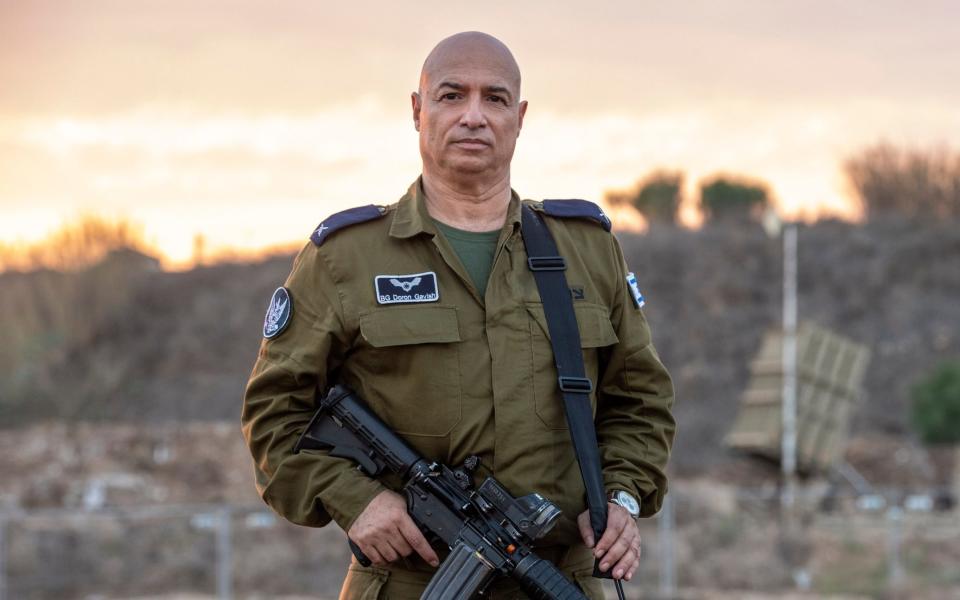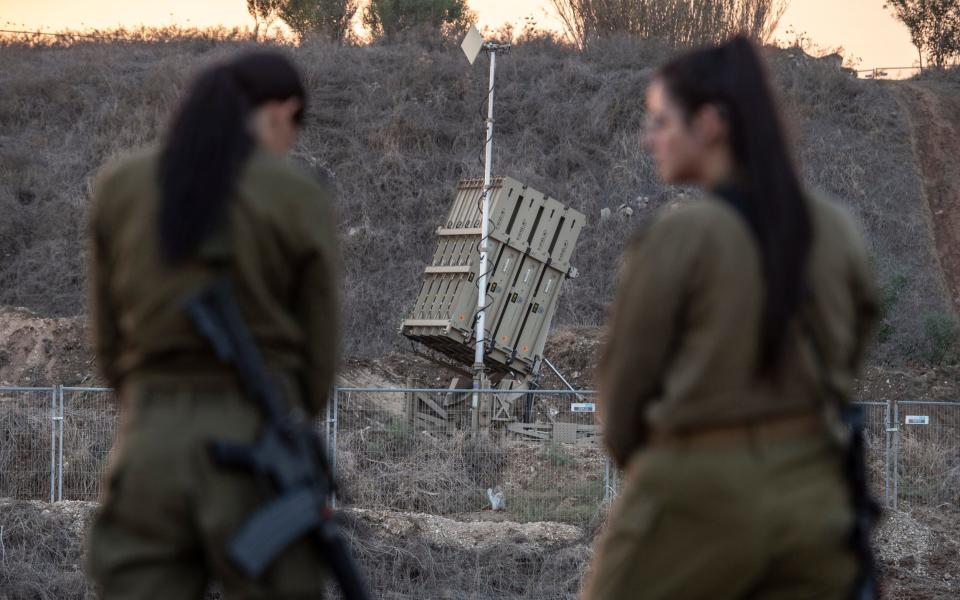How the Iron Dome is saving lives across Israel

The rocket launcher sits on a metal frame raised off the ground by hydraulic legs.
At the moment it is quiet, unmoving in the middle of a deep field in central Israel. There is no rocket fire coming across the border from Gaza.
But when the launcher is called into action, it saves lives with almost every shot: the Iron Dome air defence system - of which this is just one small part - intercepts nine in every 10 munitions fired into Israel.
In total, Israel has 11 Iron Dome batteries, and with the threat of a war breaking out on the northern border with Hezbollah, the US has reportedly pledged two more. Few countries in the world are as well-protected against airborne strikes.
“It’s fair to say that [Iron Dome] is saving a lot of Israeli lives, this is for sure,” said Brigadier General Doron Gavish, former commander of Israel’s aerial defense force, who worked on Iron Dome when it became fully operational in 2011.
“Unfortunately, Hamas is not shooting for the military installations, it’s directing all its rockets towards the cities and civilians. It is a system that is really designed to save people.”
Showing The Telegraph around the system in central Israel, military sources refused to give an exact figure for the number of rockets the Iron Dome has intercepted since Hamas launched its attack on October 7. But the number will be in the thousands.
By November 8, Hamas had fired more than 9,500 rockets at Israel.
The Iron Dome technology is state of the art, but the systems are not fully automated.
Radar detects and tracks incoming missiles, but Israel Defense Force (IDF) operatives, working in a control centre, decide whether to deploy a counter-missile if the projectile is heading towards civilian infrastructure.
A typical Iron Dome system comprises several launch units, each capable of holding 20 Tamir interceptor missiles, worth $60,000 each.
Brig Gen Gavish stressed that Iron Dome operators working 24/7 are critical to the system’s success rate.
“The warriors (as they are known) are ready at any moment, any time, ready to intercept, staring at those screens, because they never know when it’s going to come. It’s always a surprise,” he said.

Benjamin Netanyahu, Israel’s prime minister, saw a live interception when he visited a battery on Wednesday last week.
“These fighting men and women who are operating our Iron Dome array are the shield of the State of Israel.”
“You are saving civilians while they sacrifice civilians and bring them into the war zone and do not allow them to leave,” he told the operatives.
The Iron Dome, developed by Israeli company Rafael Advanced Defense Systems, was a key plank of Mr Netanyahu’s security policy, shattered so brutally on October 7.
While grateful for the protection offered by the system, to which the US contributed $1.6 billion in funding between 2011 and 2021, civilians told The Telegraph they were concerned with how much blind faith had been put in it. When Hamas struck, it was terrorists on the ground carrying out atrocities.
There are questions, moreover, on how the Iron Dome would stand up to a war on two or more fronts. When Hamas fired roughly 3,000 rockets at Israel on Oct 7, many got through by sheer force of numbers. A 90 per cent success rate is a 10 per cent failure rate, and that ratio may worsen under the heaviest barrages.

Hezbollah, the Lebanese paramilitary group, possesses a far larger and more sophisticated missile arsenal than its ally Hamas.
Earlier this week, a Hezbollah rocket attack wounded several workers from Israel Electric, killing one person.
Mr Netanyahu warned that “fire will be answered with much stronger fire” if Hezbollah escalates the war. Yoav Gallant, Israel’s defence minister, was reported to be in favour of a major pre-emptive strike on Hezbollah, only for the option to be turned down under US pressure.
For most Israeli civilians, the Iron Dome provides psychological as well as literal protection.
“It has a strategic meaning to Israel,” Brig Gen Gavish said. “People around us feel it because when there is a siren, they know that the interception is coming and after they could go back to their life. I’m not sure that it is like this in other places in the world.”
Sergeant First Class Noa, a 21-year-old reservist, agreed: “You do feel a lot safer, but still hearing that alarm does something to you,” she said.
“You know that you have an Iron Dome, but it’s still knowing that a rocket is targeted at you. Because again, the Iron Dome is incredible, but at the end of the day, no one’s perfect and no machine is perfect.”


